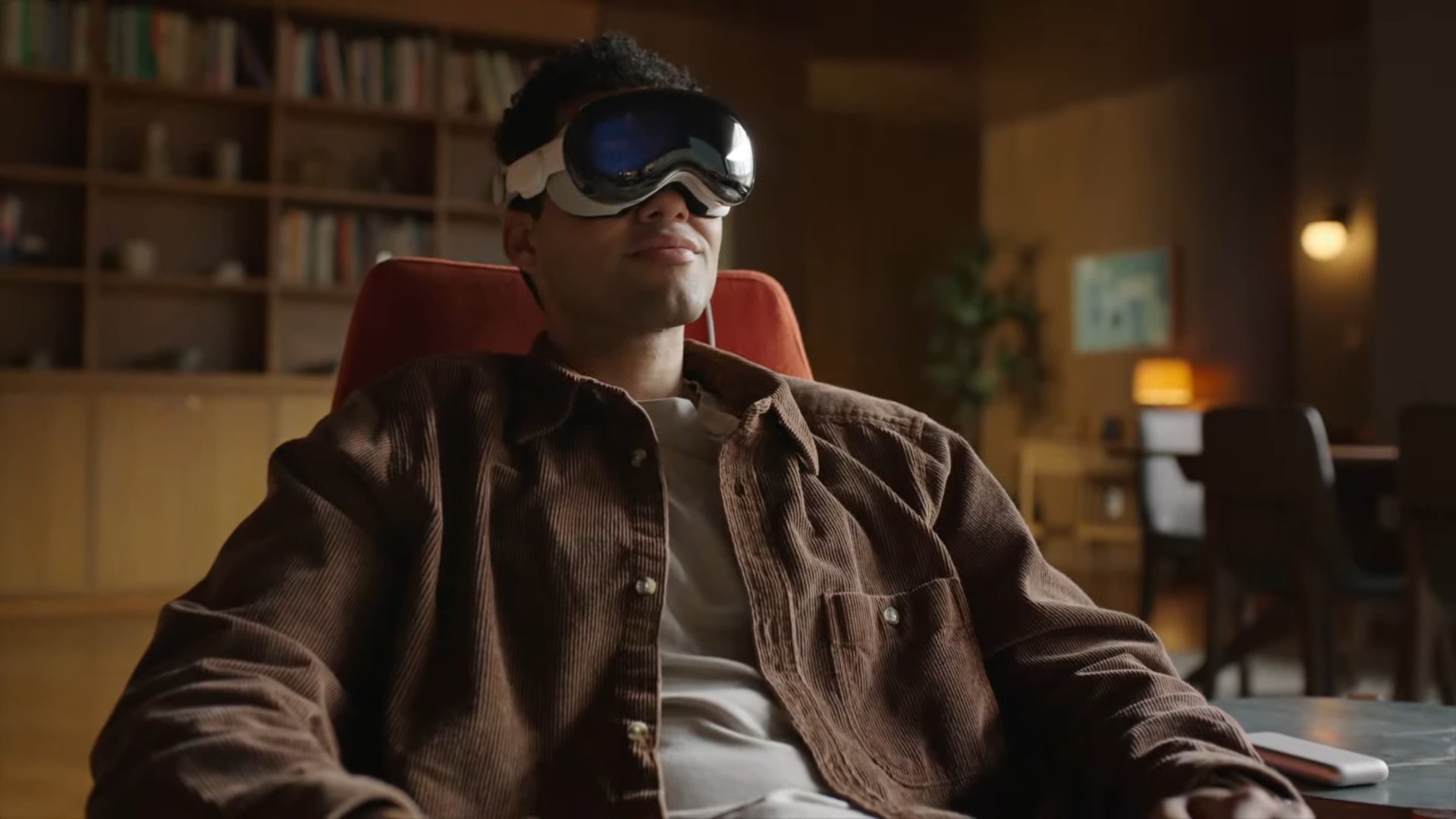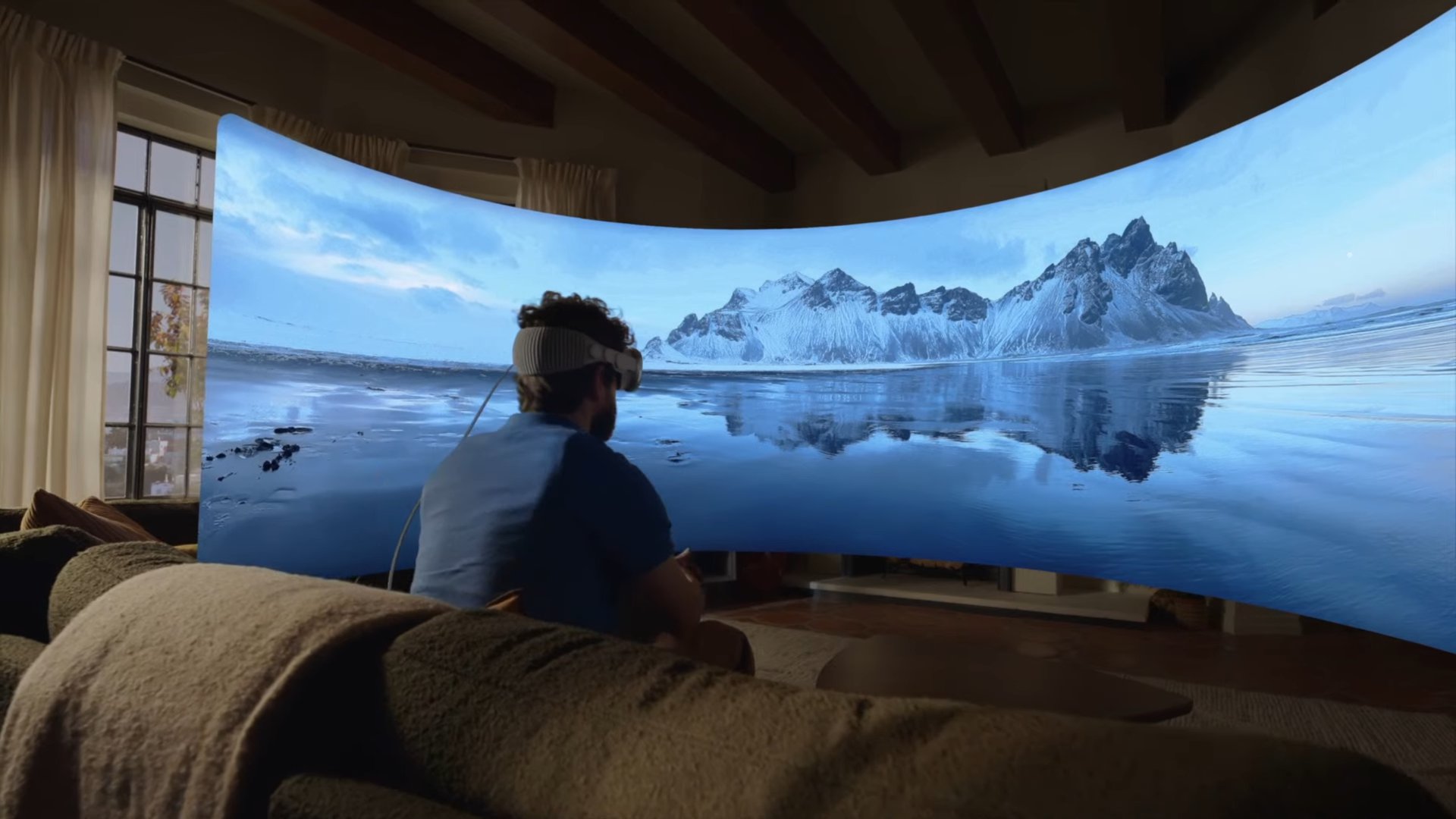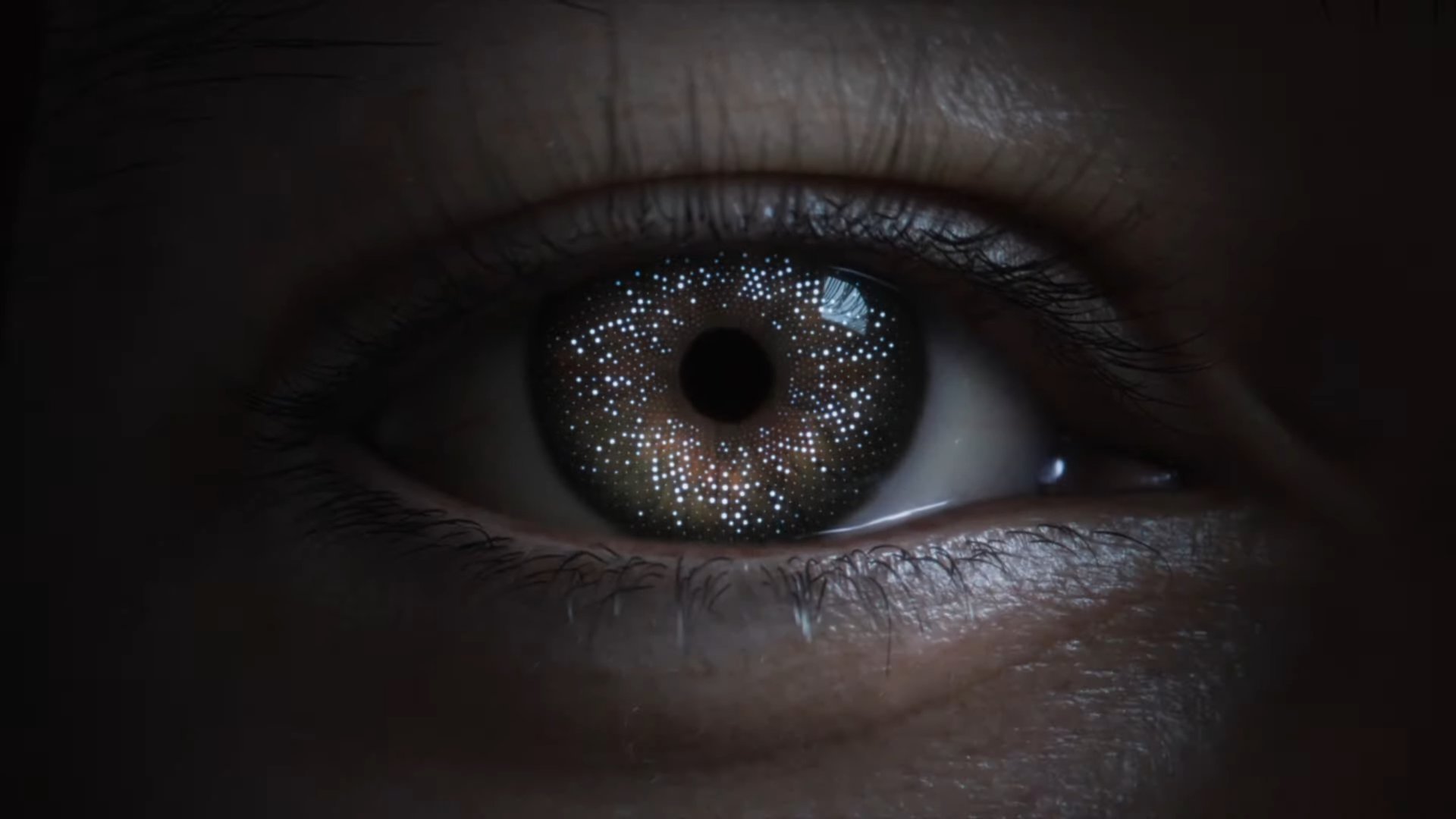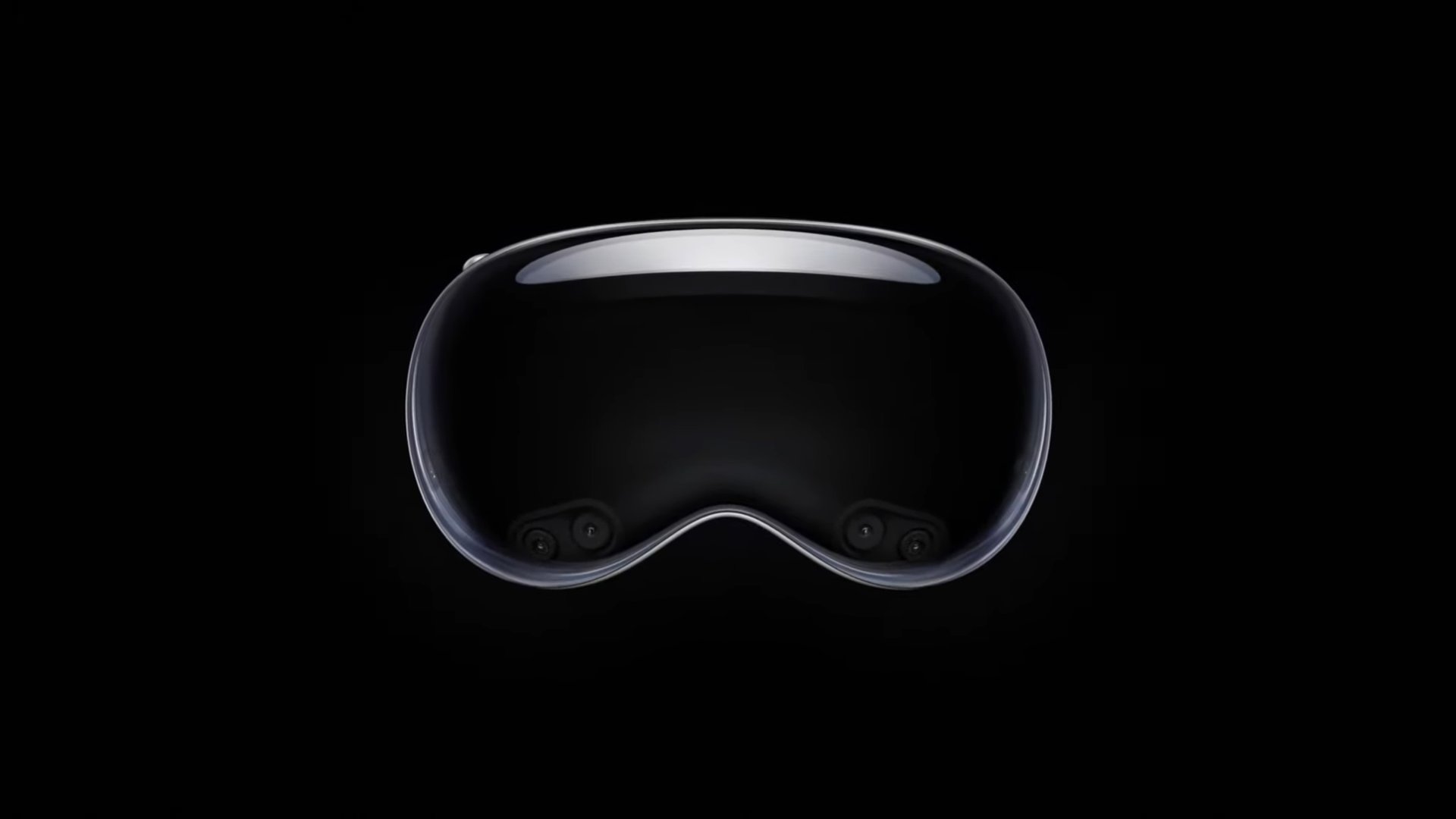Affiliate links on Android Authority may earn us a commission. Learn more.
Apple Vision Pro is here: A $3,499 XR headset with access to the App Store
June 5, 2023
- At WWDC 2023, we finally saw the Apple Vision Pro, an XR headset.
- This is the first totally new product Apple has launched since 2015, when it debuted the first Apple Watch.
- The headset has limited availability and will cost $3,499 and will be available in 2024.
Apple doesn’t release brand new products too often. Most years, all we see are new iterations of existing products, which is what we saw in spades with the latest iPhone 14, for example. Today, though, Apple has launched a new product: an XR headset with VR and AR capabilities. This is the first new product launch from the company since 2015, which is when it launched the first Apple Watch.
The headset is officially called the Apple Vision Pro. From watching the launch, it’s clear Apple has put a lot of thought into this device — and also has a lot riding on it. Here’s everything we know so far!
Apple Vision Pro: Design

The first XR headset from Apple, as one would expect, doesn’t look like any other headsets on the market. One might call it a set of high-tech ski goggles before they’d call it a virtual reality (VR) system.
True to Apple’s premium nature, the Vision Pro is made of some expensive stuff. The entire front is one piece of 3D-cut glass. Aluminum accents add some flair and custom-designed fabric helps keep the headset comfortable.
One of the more exciting aspects of the overall design is the front. Here, you’ll find an external display that shows the wearer’s eyes by using internal cameras and sensors. Apple calls this feature EyeSight. It’s a bit disorienting to see at first, but it does make the Vision Pro wholly unique, as nothing else on the market is quite like this.
That external display will make in-person interactions more natural. This will be possible thanks to numerous external cameras, which enable a full-color video passthrough. In other words, the wearer can see the physical world around them when they aren’t viewing VR content. So they can see the people around them, and the people around them can see their facial expressions, making it easy to have a real-time conversation with someone without needing to remove the headset.
Those external cameras also allow for augmented reality (AR) features, which we’ll get to in a second. You can jump back and forth from AR (or passthrough) to VR using a digital crown-esque switch on the outside of the headset. This creates a smooth fade transition between the two modes, reducing disorientation.
In what will certainly be a controversial move, Apple did not incorporate a battery within the Vision Pro. Instead, the battery pack is connected to the device with a cable, and the user carries it on their person, whether in a pocket or some other carrying system. This is something we don’t see much on the market, as most consumer headsets have the battery inside the goggles (like the Meta Quest 3) or on the back strap (like the HTC Vive XR Elite). The benefit of keeping the battery separate is a substantially reduced weight of what you wear on your head, making longer sessions much more comfortable. However, needing to carry the battery pack is clunky, and the cable could get in the way. This will almost certainly be a “love it or hate it” decision from the user’s perspective.
You might be wondering what the controllers are like. However, there are no controllers. All functions of Vision Pro are controlled using your hands, voice, and eyes. However, when you’re playing games, you can sync a “normal” controller and use that.
Specs and features

The Vision Pro is a standalone headset. It does not need to be connected to a smartphone or computer to function. Everything you need to use it is included with your purchase.
An M2 processor powers the Apple Vision Pro. That’s paired with a new chip called R1, which handles real-time sensor processing. Just with M2 on board alone, the Vision Pro becomes one of the most capable standalone XR headsets on the market. The M2 chip also makes the headset compatible with most apps and services you enjoy on iPads and iPhones. Siri is also on board, obviously.
The displays inside the headset are capable of 4K output. This should create a highly detailed experience, even if it would chew through battery life. Interestingly, because the device is so thin, you can’t wear prescription glasses while using the Apple Vision Pro. You’ll need to snap in prescription lenses if you have vision issues. This will undoubtedly be a massive barrier of entry for people looking to try or even buy one of these, not to mention make it very difficult to share your Vision Pro with others.
As for audio, there are speakers located near the user’s temples. This allows you to use the device without headphones and still get spatial audio support. However, you can sync it with AirPods if you like. This is especially useful when using the headset to watch a movie. When doing so, you can create a virtual TV in your space and resize it as large or small as you prefer. You can also watch 3D movies with full 3D support.
Vision Pro isn’t just a content deliverer but a content capture, too. This is actually Apple’s first 3D camera. A press of a button on the outside of the device starts capturing a 3D image or video, which you can then view in 3D within the headset. Of course, your captured videos and images sync with your Apple ID, so you can view and share them as easily as you would with an iPhone.
Use cases and apps

The biggest barrier Apple faces with the success or failure of the Vision Pro is figuring out how to convince consumers that they need one. Meta — far and away Apple’s main competitor in this space — has had a hell of a time selling the “metaverse,” for example. In fact, the primary reason people buy XR headsets is still gaming, making them a niche product. Apple, as everyone is aware, does not make niche products. Can Apple succeed where companies like Meta have struggled?
According to the WWDC 2023 launch, Apple sees the Vision Pro as a multi-faceted device. This includes business-focused uses (video conferencing, including FaceTime support, for example) as well as entertainment (gaming, video streaming, etc.). For business users, you’ll be able to conduct FaceTime meetings, complete with a virtual meeting room and virtual whiteboard. This should help business users feel like they are in the same place. However, this isn’t anything new, and Meta hasn’t been able to convert huge swathes of consumers to this use case.
What Apple has that Meta does not have is access to apps. Because the Vision Pro runs on M2 silicon, it can natively support most iPhone/iPad apps. This means that, out of the box, the Vision Pro can do pretty much everything your iPad can do, and the apps and games you already own will transfer over as soon as you connect your Apple ID.
You can “throw” apps anywhere within your field of vision. This could be in the real world, such as on your coffee table, or in a virtual world. Theoretically, this could allow you to read a book for a bit, check your email, and then start watching an Apple TV Plus show. You could then grab a controller, fire up a video game, and start playing — all while never taking off the headset.
This could be the lynchpin that makes the Apple Vision Pro a success. However, it’s still just taking what consumers can already do on their iPhones and iPads but adding a fancy and very expensive headset into the mix. So time will tell if this can win over buyers.
visionOS: The software powering the Vision Pro

Apple needed something to power the Vision Pro, and already-existing systems wouldn’t cut it. That’s why it created visionOS, which Apple claims is the first OS explicitly developed for spatial computing.
To help encourage development, visionOS makes it easy for developers to port their existing iOS/iPadOS apps to the Vision Pro. Apple also wants to make it as easy as possible for devs to create new apps for this operating system. Devs can use composition tools they already know, such as Swift, to create these apps.
However, the fact that Vision Pro will have access to apps people already know and love on day one will be the coolest aspect of the product. Unlike other VR/AR systems, you won’t need to deal with an anemic app store for years while the OEM courts development. As soon as you put the headset on, you’ll be able to access your most-used apps immediately.
visionOS also incorporates Optic ID. This is like Face ID, but uses your eyes to verify your identity. Speaking of security, visionOS also keeps your usage private. For example, eye-tracking is not recorded until you make a selection. This means while you scan around a selection of apps trying to decide which one to select, only the selection itself is tracked, not your actions before that selection.
Apple Vision Pro: Price and availability

The newest consumer-focused headset from Meta is the Quest 3, which will start at $499. In comparison, the Apple Vision Pro will start at $3,499, or roughly 7x the price of a Quest 3, and $2,000 more than the enterprise-centric Meta Quest Pro. This will make the Vision Pro a very, very hard sell to regular buyers, perhaps putting it closer to Microsoft’s HoloLens line.
If you are interested in getting one, you’ll need a lot of luck. It won’t be available to get until 2024, and even then, there will be a very limited quantity.
The rumor mill suggests that Apple is selling this product with no profit margin or even at a total loss. This is unusual for Apple, which usually has enormous profit margins on its products thanks to its ruthless negotiations at the supply chain level.
If this is true, Apple could be seeing the Vision Pro not as a triumphant entrance into the XR space but instead as a quiet declaration of intent. It could be a device to show what Apple wants to do in the space and give developers — and a limited subset of consumers — a chance to try it out. As the months and years go on, the company could refine the product, lower its cost, and continue on with business as usual.
The jury is still out, though, that Apple can pull this off. Apple is not a risk-taking company, but the Apple Vision Pro seems like a huge leap of faith into an unproven market. If any company can define an industry, though, it’s Apple.